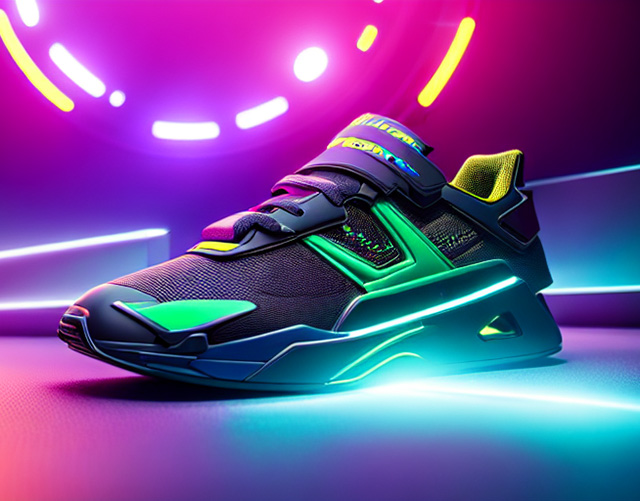In the years to come, sports shoes will continue to evolve and are likely to embrace technological features that enhance performance, comfort, and overall athlete experience. Advancements in sports shoes that we may see include improved design and production, the inclusion of smart materials that allow the shoes to adapt to different situations to benefit both comfort and performance, and the incorporation of sensors to provide feedback to be used to boost training and athletic achievement.
 running shoes of the future
running shoes of the future Smart Materials
We expect future shoe designs to use more sustainable materials and manufacturing methods, aligning with eco-conscious trends in the sports industry and in society in general. These materials will also incorporate smart technologies. Responsive smart materials have the potential to transform sports shoe designs from static gear to dynamic, personalized performance-enhancers that adapt to the wearer's needs, activities, and environment, and revolutionize performance and user experience.
One example of smart materials might be adaptive cushioning, which has the capability to adjust its firmness and cushioning properties in real-time, leading to a personalized and adaptable cushioning system that responds to the athlete's movements and the changing terrain. Not only would this optimize shock absorption and energy return, reducing strain on joints and potentially lowering the risk of injuries, but it would also elevate overall comfort during high-impact activities.
Fine Tuned Grip
Another area of potential innovation is the grip on the base of the shoe. Not only could the design be custom 3D printed to match the weight and movement characteristics of the athlete, the use of smart materials could imbue shoes with the ability to modify their grip patterns in real time based on the surface. By adapting the shoe's traction to wet, dry, or uneven terrains, athletes would gain heightened stability, agility, and confidence. This feature could prove particularly beneficial in sports that require quick changes in direction and varying surface interactions.
A Better Fit
Future sports shoes could have individualized customization, with 3D-printed mid-soles that precisely match an individual's foot shape and arch, optimizing comfort and performance. Moreover, responsive smart materials hold the promise of transforming the very fit of sports shoes. These materials could seamlessly adjust the shoe's fit to the unique contours of the wearer's foot, delivering a customizable and adaptable experience. This real-time customization could significantly reduce discomfort, prevent blisters, and ensure optimal performance by maintaining an optimal fit that evolves with each movement. Additionally, such adaptability could have significant implications for injury prevention, as the shoe's fit would remain optimized even during the most demanding athletic endeavors.
Technology Integration
Lastly, it is not far-fetched to see biomechanical sensors being integrated into the shoe to provide real-time feedback on gait and technique, aiding athletes in refining their movements and preventing injuries. Furthermore, shoes can be linked to smart devices for data tracking, analysis, and even personalized training recommendations, ushering in a new era of intelligent sportswear designed to elevate athletic performance.
Related Pages
- Shoes for Sport - A Complete Guide
- Fitting Guide for Running Shoes
- Buying Guide for Running Shoes
- Golf Shoes of the Future
- Most Common Exercise Injuries to Your Feet and How to Prevent Them
- Sports equipment
- Technology Trends in sports
- Future Stadium Designs


 Current Events
Current Events